It is impossible to visit the charming Catalan capital of Barcelona and not manage to see or hear parakeets. Their excitable, raucous squawks are audible just about anywhere in the city, even on its busiest streets, and most mornings you will hear them even from your hotel bedroom, as they noisily leave roost sites and head out for the day.
While self-sustaining populations of various parakeet species can be found in the urban sprawls of many European cities, no more pronounced are these exotic settlers than on the streets of Barcelona, where a remarkable seven species can be found, each established to a varying degree thanks to an agreeable year-round climate and a lack of predators and competition.
Of these, it is Monk Parakeet that is the commonest. They are so prominent that, in some parts, they have themselves become tourist attractions within tourist attractions for the millions of sightseers visiting the city each year. Noisy flocks can be encountered at just about all city's main sights, including the Sagrada Familia, Park Güell and Arc de Triomf. At Güell in particular, their huge, communal nests, built of sticks, are apparent on almost every palm tree surrounding Gaudí’s famous sculptural buildings. Meanwhile, adjacent to the Arc de Triomf is Parc de la Ciutadella, where literally hundreds of them can be found, flying around or feeding unconcernedly on the grass, often just centimetres from groups of gawping, smartphone-armed tourists, firing off innumerable selfies with the overly friendly Psittacines.
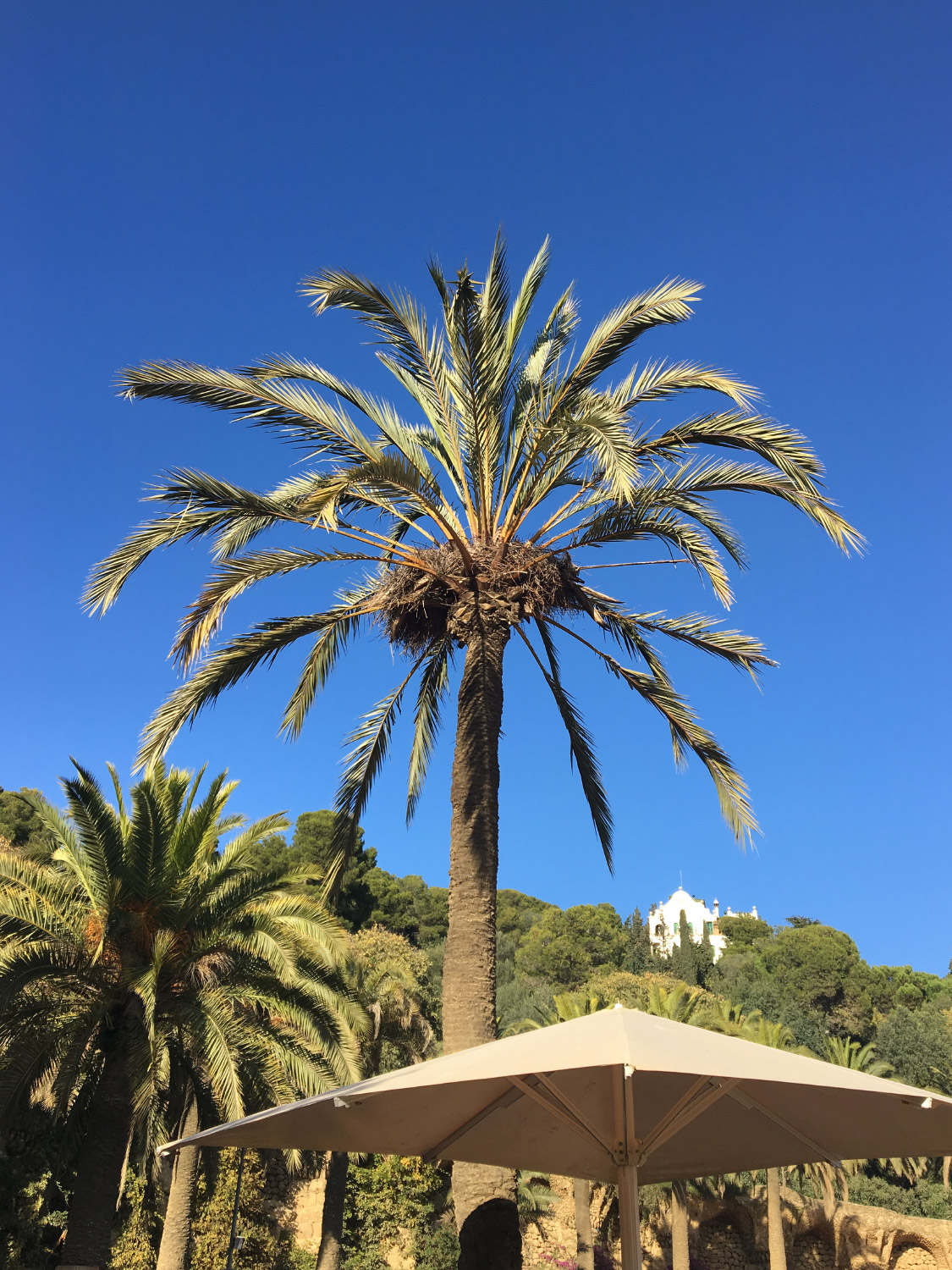
The mass of sticks at the base of this palm at Park Güell is a Monk Parakeet nest. There are dozens of these impressive structures around the park, supporting hundreds of parakeets (Josh Jones).
It is at Ciutadella where you will likely notice a multitude of Monks wearing jewellery – more specifically, large, numbered 'medallions' hanging around their necks, which are helping scientists to monitor their movements around the city and beyond. The necklaces are used as parrots, with their strong bills and dextrous feet, have previously proven effective at removing other types of marking, such as leg rings. It's quite curious to see them ambling around the park lawns with their jewellery, and it does look a bit garish, but scientific studies have reported no negative effects on the birds.
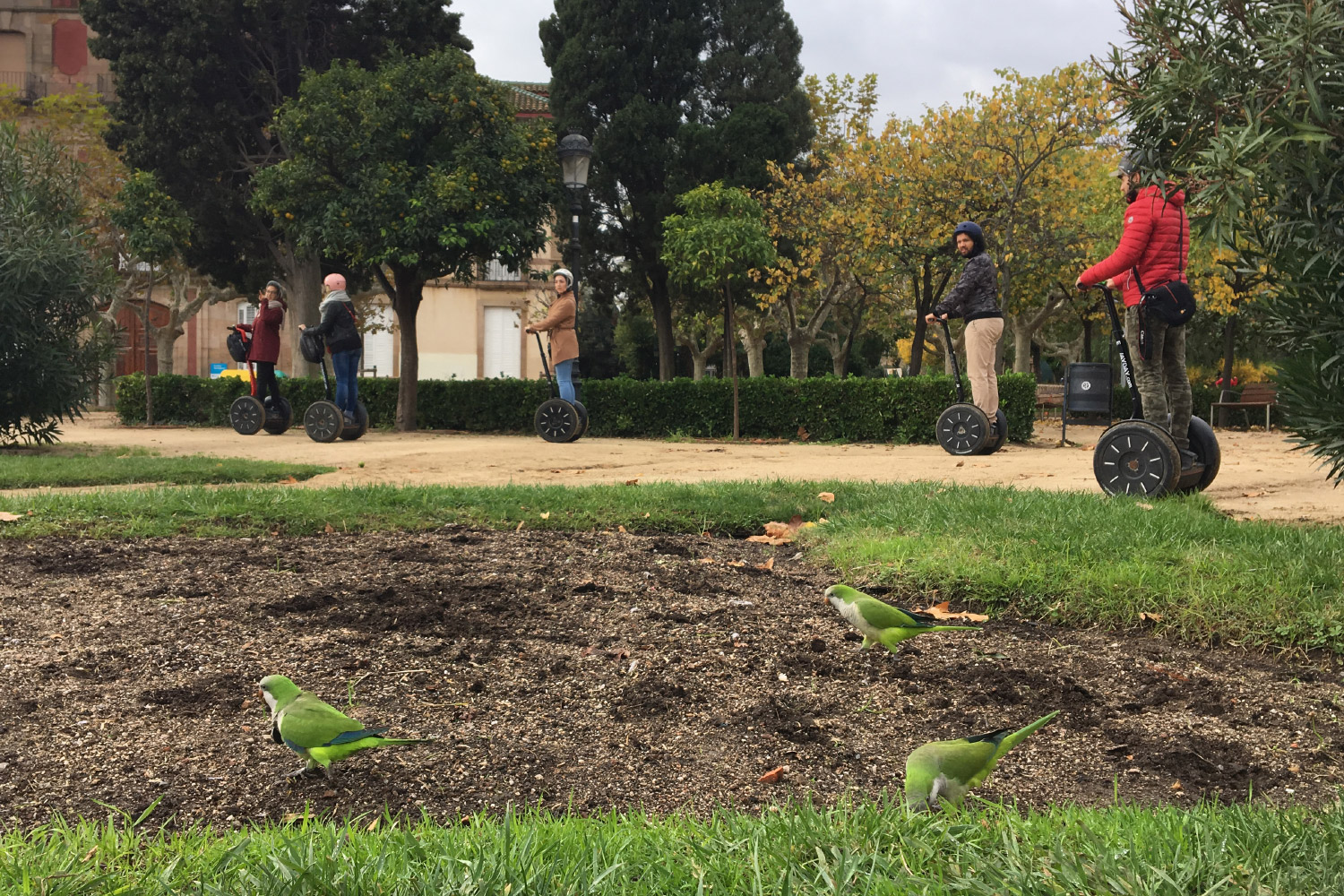
Monk Parakeets feed unconcernedly at point-blank range at Parc de la Ciutadella as tourists ride by on segways. The left-hand bird is wearing a marked medallion and forms part of an ongoing scientific study (Josh Jones).
Barcelona's streets are characterised by stands of Oriental Plane trees, which add to the city's distinctive vibe while also serving as a practical way to mitigate vehicle pollution and reduce temperatures at street level, especially during the hot days of summer. These trees also appear to be favourites of various parakeets, particularly the city's Ring-necked Parakeets, which can be heard and seen all the way along La Rambla, Barcelona's bustling pedestrian street which, like London's Oxford Street, is a central focal point for the tourism and commerce. Seeing parakeets here is a testament to the various species' overriding success in making the most of even the most urban areas, with their adaptability matched by few, if any native species – it can only really be compared to that of feral Rock Doves.
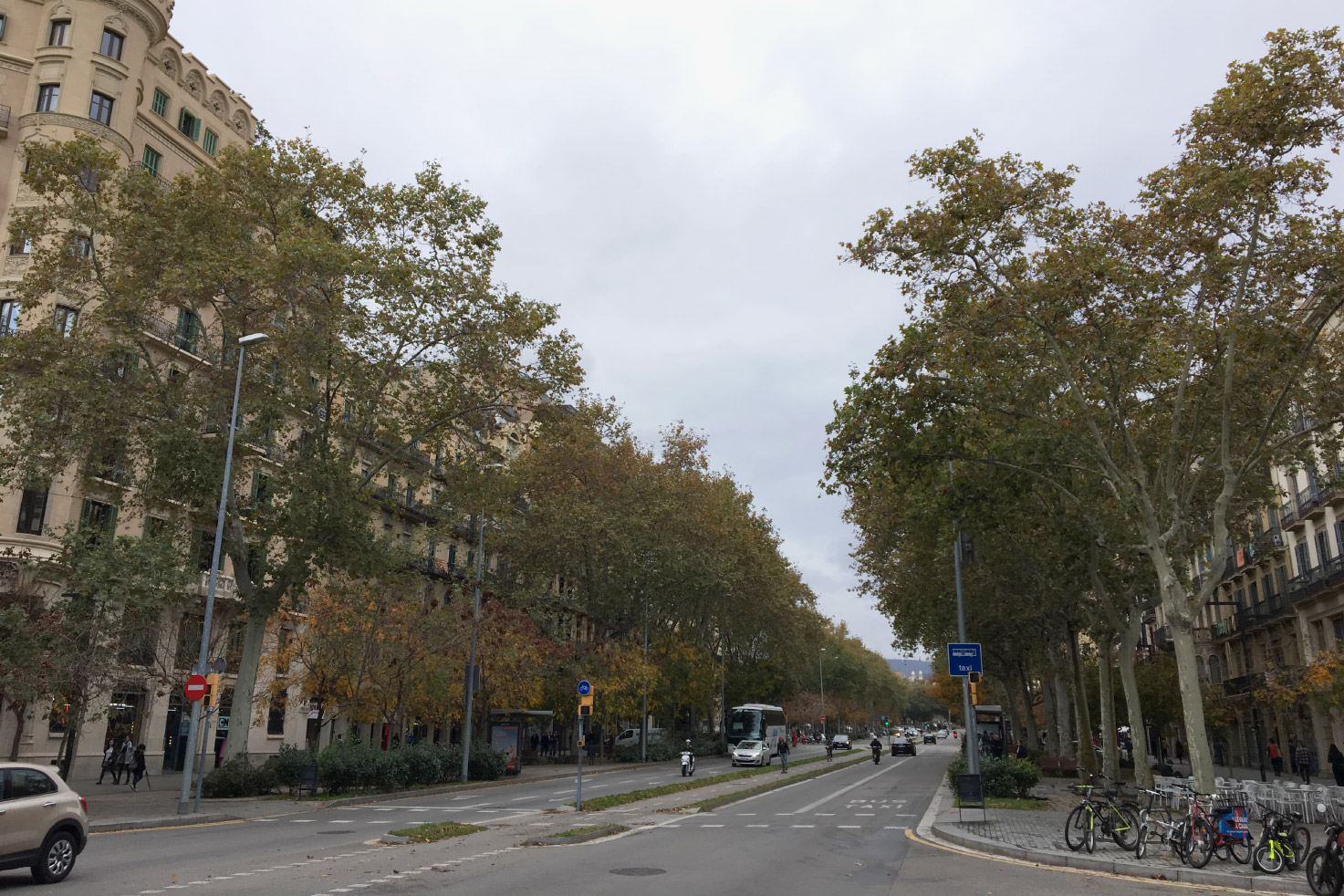
Oriental Plane Trees adorn Barcelona's streets, with these trees seemingly very attractive to Ring-necked Parakeets in particular (Josh Jones).
The other five species are somewhat less numerous than the two ubiquitous parakeets mentioned above. However, the harsher, lower-pitched and louder squawks of Aratinga parakeets can often be heard around Barcelona's streets and parks. The genus is represented here by no fewer than three species: Nanday, Red-masked and Mitred Parakeets, all of which are native to the Neotropics, plus another, Blue-crowned Parakeet, again from South America. These four, along with a fifth, Senegal Parrot, a West African species, have been breeding 'wild' in the city for many years (Nanday and Mitred since at least 1992), although they are still assigned to Category E of the Spanish list.
Introduced species, included on national lists on the basis of being self-sustaining, are a constant source of conflict for birders keen on listing. The rules on what exactly is deemed countable are inconsistent across country borders and many small, supposedly self-sustaining populations end up being somewhat transient, showing short-term increases (leading to their inclusion on a national list) followed by sudden and terminal declines, instigated by changing factors such as unusual weather (for example, a particularly cold winter) or localised habitat loss.
Setting aside both Monk and Ring-necked Parakeets, which have unequivocally established themselves part of the avifauna across Barcelona (and many other European cities), what of the validity of the city's other vibrant exotics as a tick? Of the five, Mitred Parakeet is easily the most numerous and thus the strongest candidate for an 'upgrade' to Category C, which recognises self-sustaining, feral bird populations and forms a valid part of the Spanish bird list. There is no doubt that Barcelona is the stronghold for Nanday Parakeets within Europe – it can be found in decent numbers and has been breeding in the city for the best part of 30 years. Elsewhere, Nanday has a tiny population on Tenerife, which isn't yet tickable, while a previously countable (but microscopic) population north of Tel Aviv, Israel, now appears to have died out (was it ever self-sustaining? Surely not …).
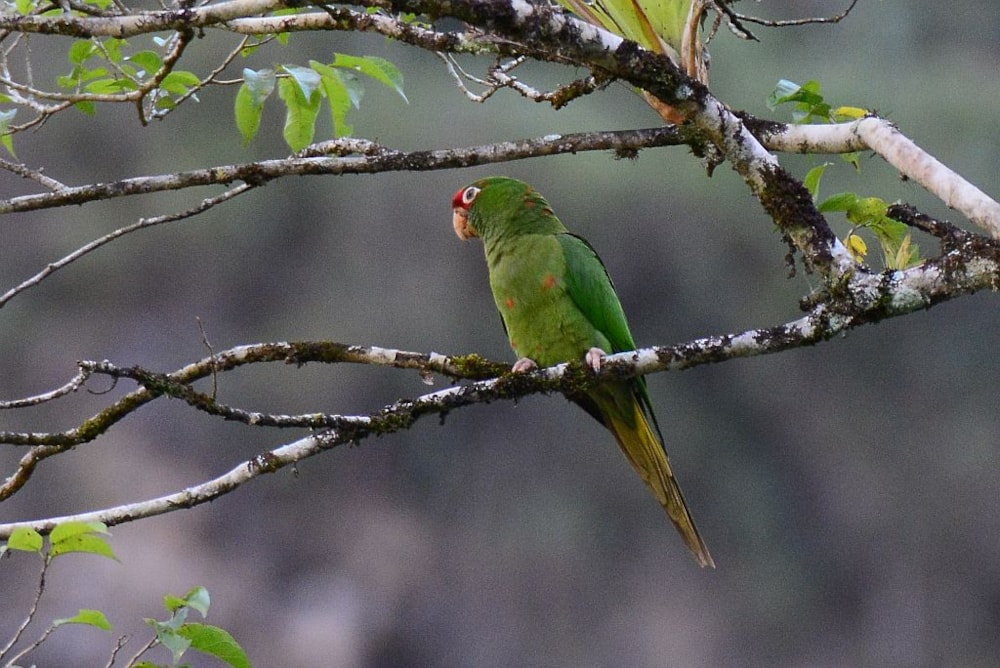
After Monk and Ring-necked, Mitred is the most likely parakeet species that any visitor to Barcelona will encounter (Tim Dean).
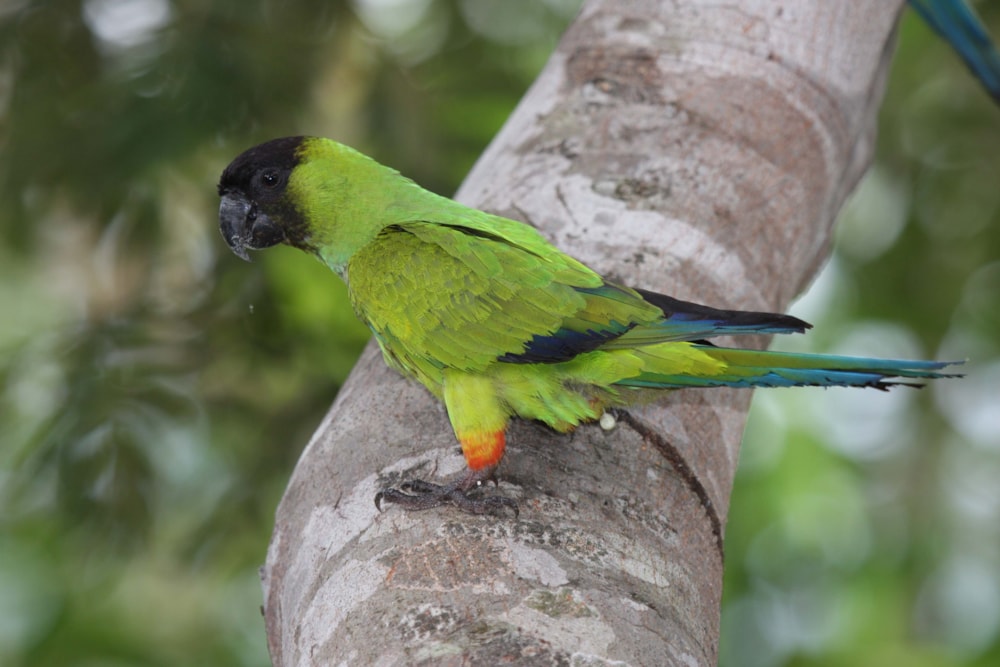
The distinctive black hood of Nanday Parakeet makes identification easy. This species has successfully bred in Barcelona since the early 1990s at least (Peter Gasson).
An increasing number of Blue-crowned Parakeets can be found in Lisbon, Portugal, and the species looks well set to be added to Category C of the Portuguese list in the near future, so perhaps the same will apply to Barcelona's population, which is the biggest in Spain (smaller numbers can be found in several other cities including Seville and Madrid). Senegal Parrot is another species that can be found in Lisbon, but its population remains very small there and not deemed valid of inclusion on the national list, and an addition to Category C probably isn't imminent in Spain, either, if the lack of large numbers in Barcelona is anything to go by. A review of Category C species in Spain has been promised, with the various parakeets among those species to be assessed, but how soon this comes remains to be seen.
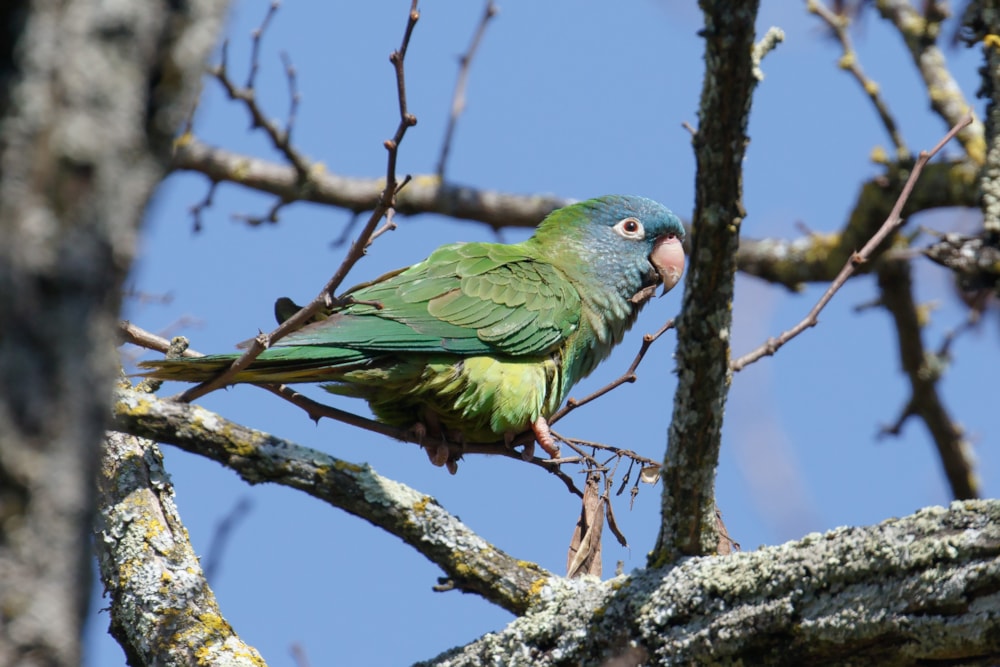
Barcelona is one of several cities on the Iberian Peninsula in which small populations of Blue-crowned Parakeet can be found (Josh Jones).
For birders travelling to Barcelona, Parc de la Ciutadella certainly appears to be the best place to catch up with all seven species, including the scarcer representatives – I saw groups of Nanday and Mitred Parakeets here in November 2017 and November 2018 respectively, without putting much effort in. For sightings, both up-to-date and historical, visit the eBird map pages link as follows: Senegal Parrot, Nanday, Blue-crowned, Mitred and Red-masked Parakeets.
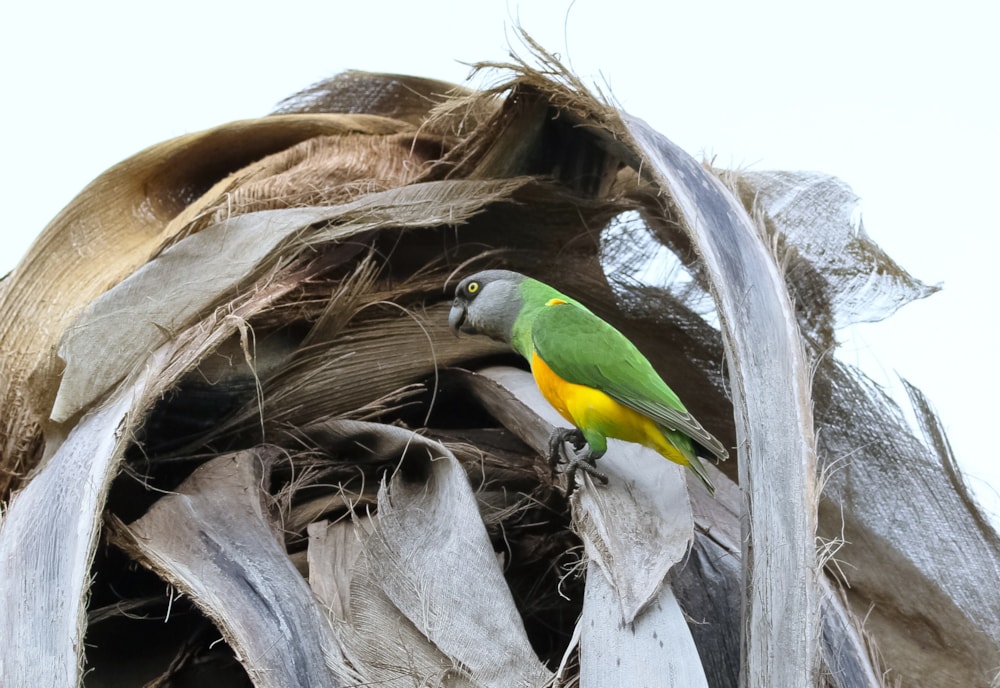
Small numbers of Senegal Parrot can be found in Barcelona (Graham Harden).
Listing ethics aside, what of the impact of these 'aliens'? A number of studies have been conducted into the damages that parakeets can cause, both human and natural. From a human perspective, Monk Parakeets have a habit of building their large, communal nests on man-made structures, including telegraph wires, which frequently cause fires and electrical power outages, especially in wet conditions. Recently, a study in Seville highlighted the severe impact that Ring-necked Parakeets were having on native bat populations within the city. Another study, involving the same species but carried out in Barcelona, documented multiple fatal attacks on Blue Tits and House Sparrows. These are worrying discoveries, involving a species that was previously considered relatively ecologically harmless, goes to show that we are still some way off appreciating the impacts of non-native species on their indigenous counterparts – and that populations across Europe may be doing considerably more damage than was first feared.
A further worry is that such problems will become increasingly exacerbated as populations boom. Parakeets face little competition for resources such as food and nesting sites in urban areas. Natural predators are few and far between, save the odd pair of urban Peregrine Falcons – which, in Barcelona, are known to have acquired a taste for Monk Parakeets, but remain relatively low in number and can hardly be considered a realistic means of truly controlling the burgeoning numbers. With a pleasant year-round climate, winter mortality on the Catalonian coast is also not the problem it might be elsewhere, and there is little to stop them spreading outwards from urban areas. The situation appears to be reflected in Britain, where Ring-necked Parakeets are becoming more and more widespread and numerous away from their 'traditional' haunt of Greater London.
There can be no doubt that the presence of parakeets, both in Barcelona and other European cities, polarises opinion among birders and non-birders alike. For many, they are noisy pests causing as yet unknown quantities of damage to native flora and fauna. However, Psitticines are among the great characters of the bird world and this, combined with their irrepressible gaudiness, makes them very likeable. Like it or not, parakeets are now well embedded among the avifauna of many European cities, and they're undoubtedly here to stay.
References
Burgio, K R, Rubega, M R & Sustaita, D. 2014. Nest-building behaviour of Monk Parakeets and insights into potential mechanisms for reducing damage to utility poles. PeerJ 2: e601.
Covas, L, Senar, J C, Roqué, L & Quesada, J. 2017. Records of fatal attacks by Rose-ringed Parakeets Psittacula krameri on native avifauna. Revista Catalana d’Ornitologia 33:45-49.
Hernández-Brito, D, Carrete, M, Ibáñez, C, Juste, J & Tella, J L. 2018. Nest-site competition and killing by invasive parakeets cause the decline of a threatened bat population. Royal Society Open Science 5(5): 172477.
Senar, J C, Carrillo-Ortiz, J & Arroyo, L. 2012. Numbered neck collars for long-distance identification of parakeets. Journal of Field Ornithology, vol 83, no 2, pp 180-185.








